The spacecraft "Chang'e-4" made a successful landing on the far side of the moon and sent the first photo
For the first time in the history of mankind, the Chinese spacecraft Chang'e-4 made a soft landing on the far side of the moon, according to the tweet of the official Chinese agency Xinhua.
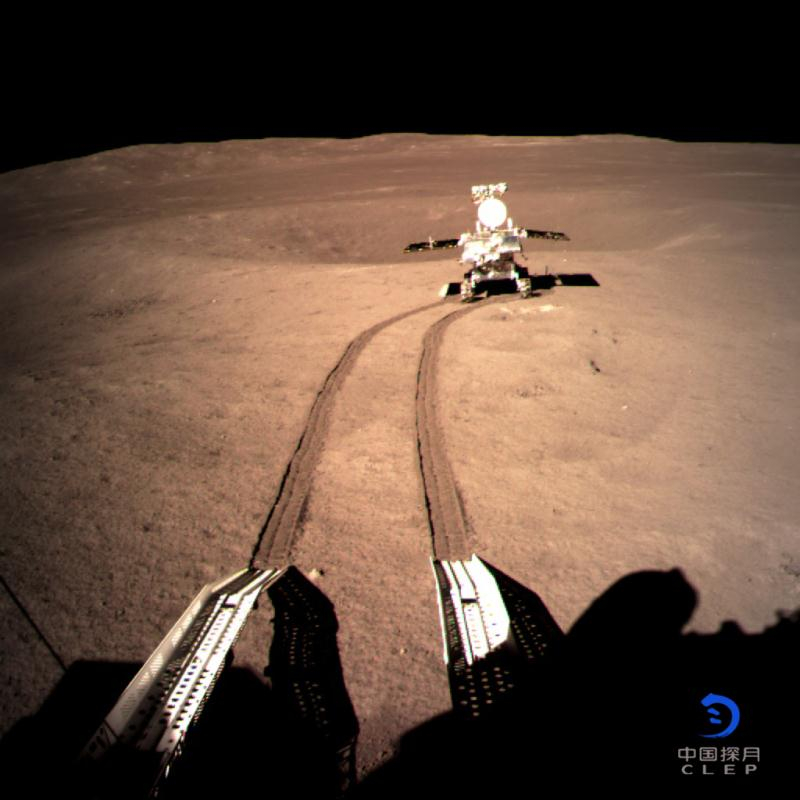
In the Associated Press, with reference to the Chinese television, they clarified that the device had sunk at 10.26 Beijing time (this morning Thursday at 5.26 Moscow time).
The Chinese authorities especially emphasize that this cosmic event is "an important milestone in the exploration of space."
In continuation of this post .
“The Chinese station Chang'e-4 landed on the far side of the moon on Thursday, January 3, 2019, becoming the first vehicle to sit softly on the unexplored side, which is never visible from Earth,” said the long-awaited event by the Chinese state-owned media outlets

Zond. which includes the landing gear and the lunar rover, landed in a pre-selected area.

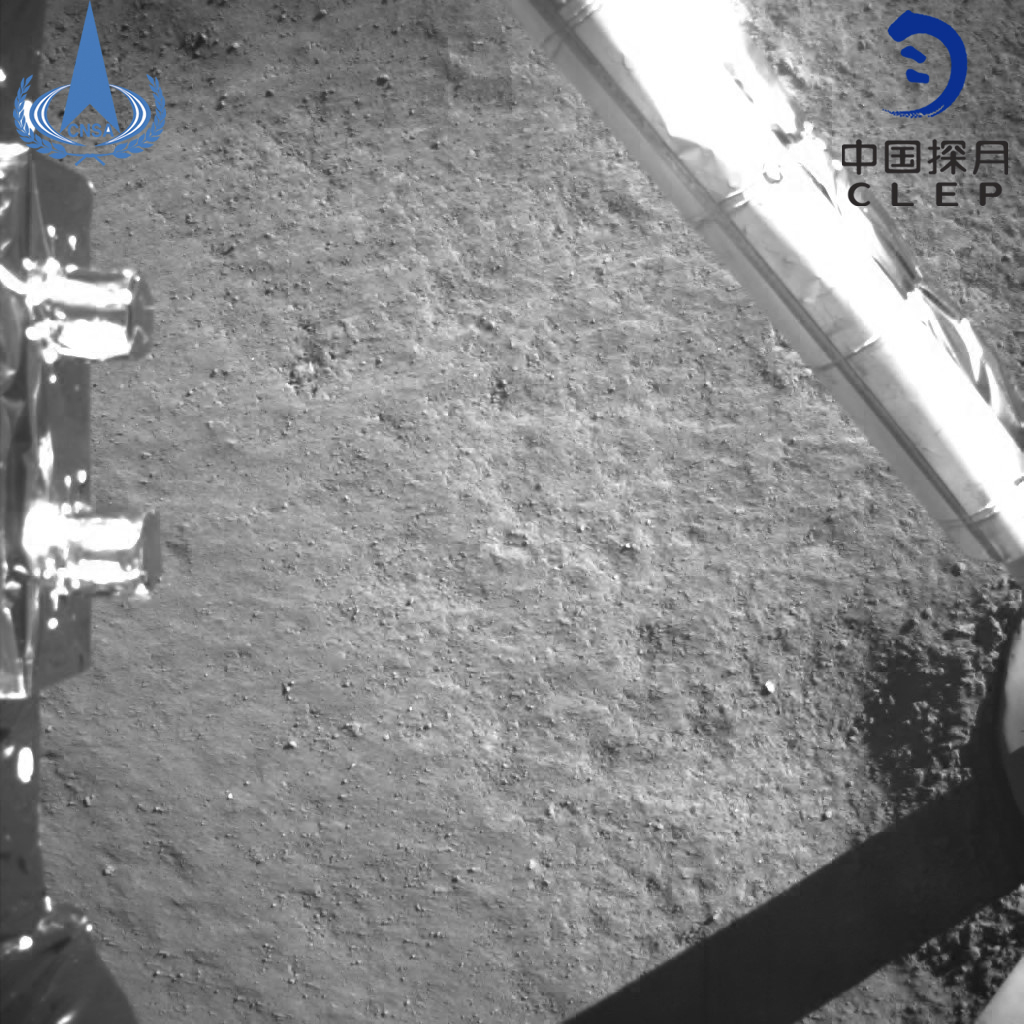
The probe sat in the crater. Pocket is a huge ancient impact crater in the southern hemisphere of the far side of the moon.
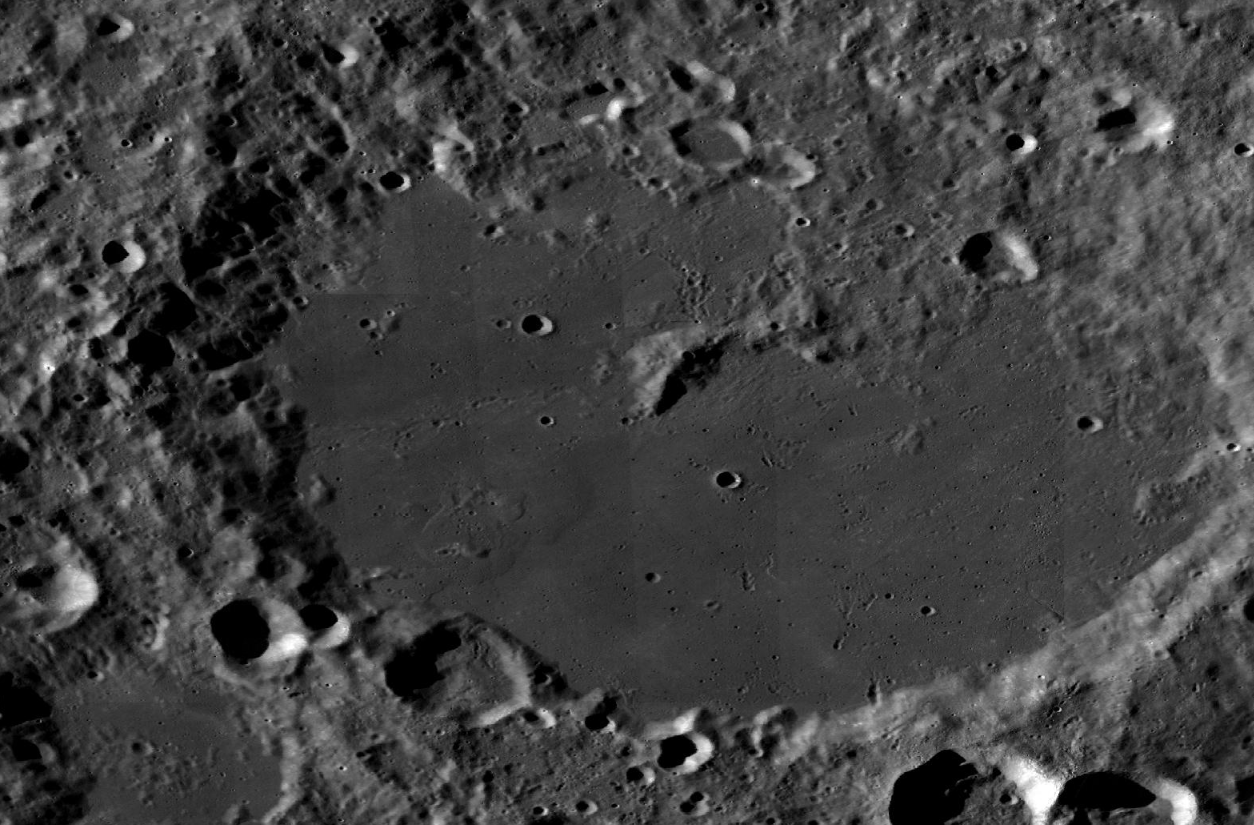
The selected landing site is located in the southern part of the Pocket crater with a diameter of 186 km, which offers relatively flat areas with a small number of slopes or visible obstacles to a safe landing.
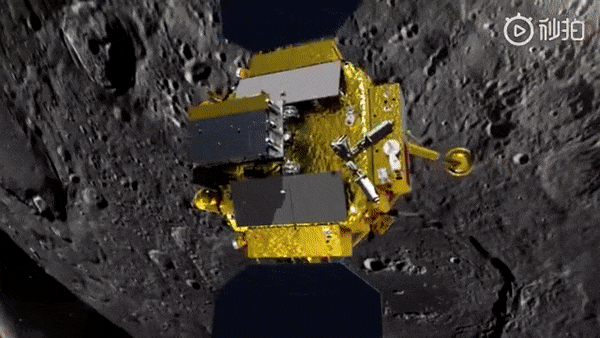
The coordinates of the landing site of the device are 177.6 degrees east longitude, 45.5 degrees south latitude, which is close enough to the previously established place.
Details of the landing:
- first, at a height of 6-8 kilometers, the device estimated its location.
- at a height of about 100 meters, he stopped the decline to analyze information on the subject of possible obstacles on the way, and only then landed.
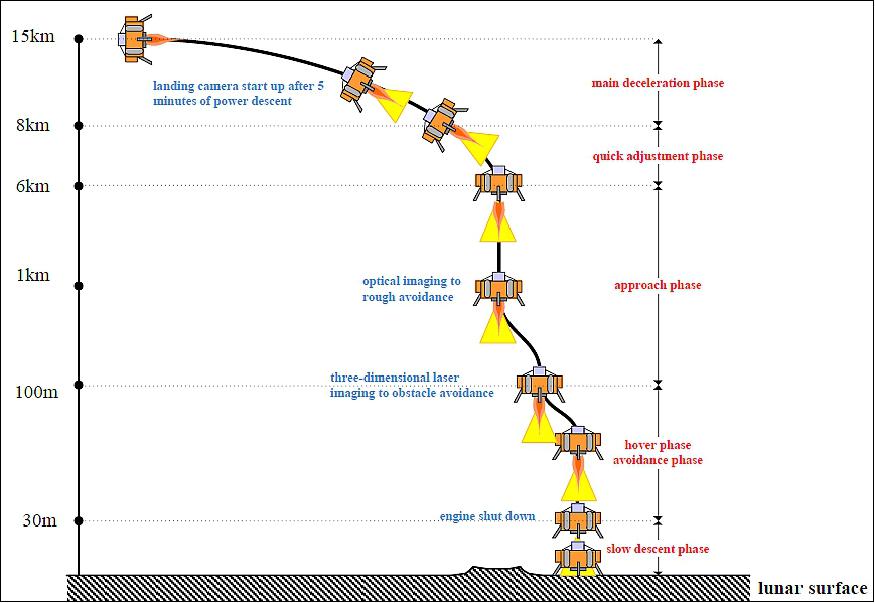
Messages about the landing of the device began with confusion, as initially the Chinese media reported on the successful touch of the lunar surface, but then these messages were removed from the tweeter.
This led to suggestions that the device crashed during landing or an abnormal situation occurred. But later the information was updated and released official statements about the successful landing.
This landing on the moon took place almost under cover of secrecy, since there was neither a live broadcast from the MCC, nor anticipating press conferences.
Already at 11.40, Beijing time (6.40 Moscow time), the device made the first ever photograph of the surface of the back side of the Moon from the landing site and transmitted it to Earth.
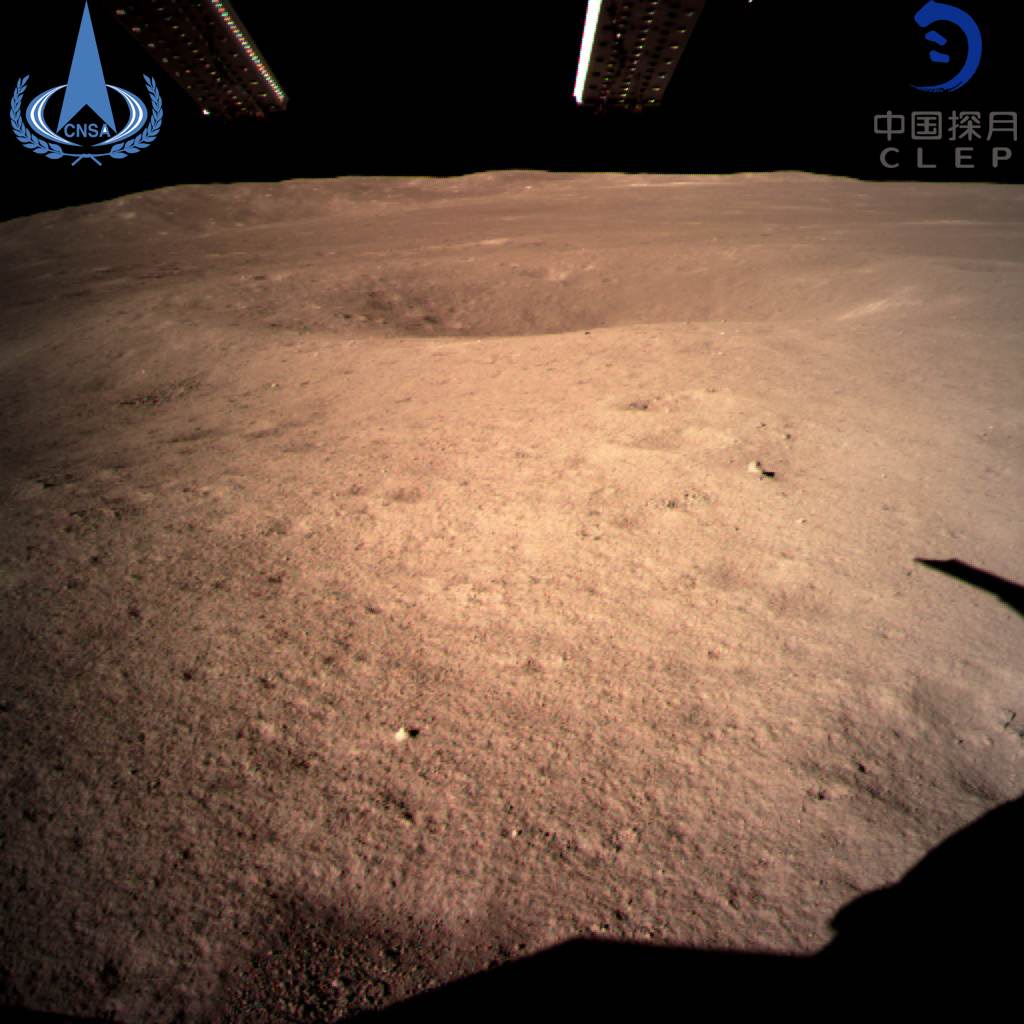
Why is this color? The answer is here .
New photos of Lunar rover Yutu-2 from here .
After seven hours of preparation, the Yutu-2 lunar rover was able to exit the boarding module and begin its first research.
The Jade Rabbit-2 will study the lunar surface until the end of a sunny day on that side of the moon, which lasts until January 12, after Yutu-2 expects 14 days of a lunar night.
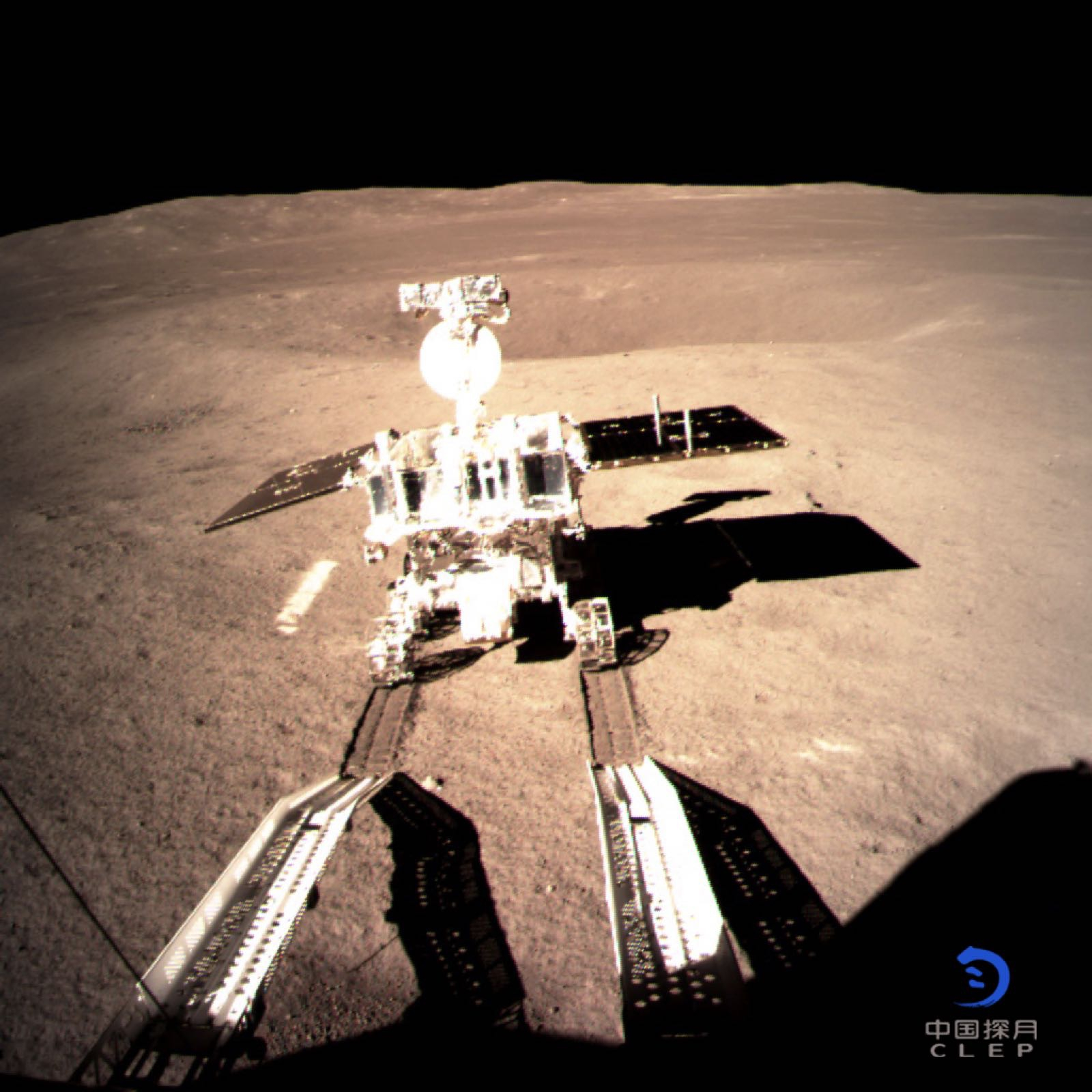

For the first time, the Soviet AMC Luna-3 was captured on the reverse side of the moon on October 7, 1959. After that, the moon was flown by other vehicles, including the Apollo-8 spacecraft with American astronauts aboard.
However, the distant part of the Earth from the surface of its satellite has not yet been photographed close to today.
The main problem is that the reverse side is never visible from Earth, due to the phenomenon of tidal capture. This means that there must be a satellite outside the moon for transmitting messages between ground tracking stations and the spacecraft.
The Tseutqiao repeater satellite (triage bridge), launched in May, operates in halo-orbit around a special gravitationally stable Lagrange point Earth-Moon L2, from which it can maintain direct visibility to the Earth and the lunar back side at any time.
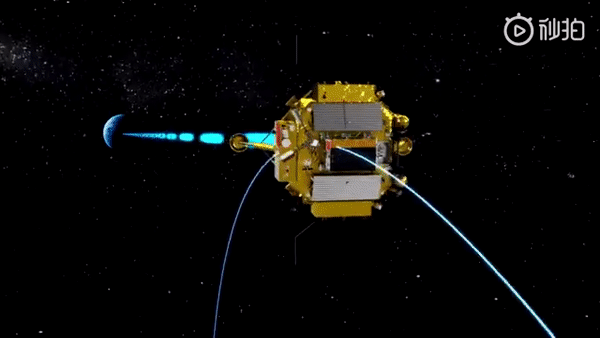
World reaction to this historical event:


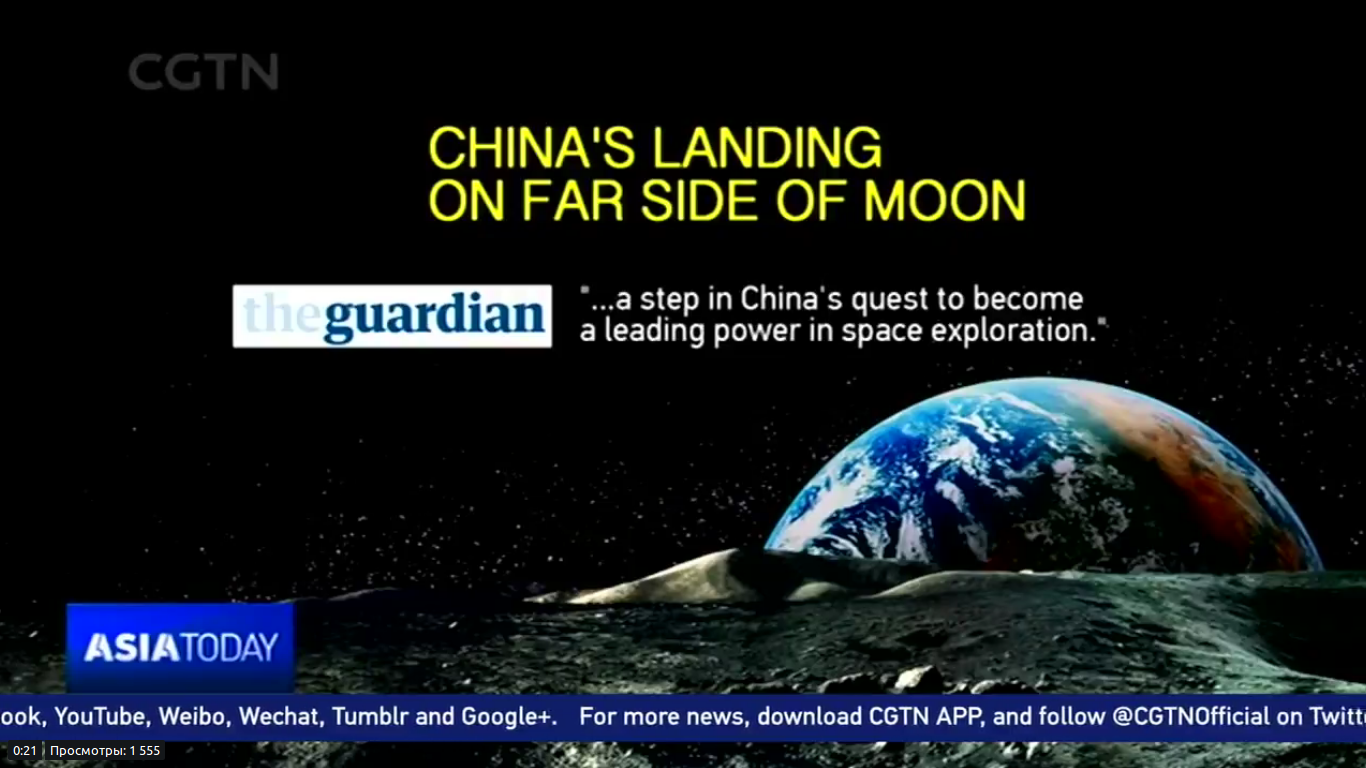

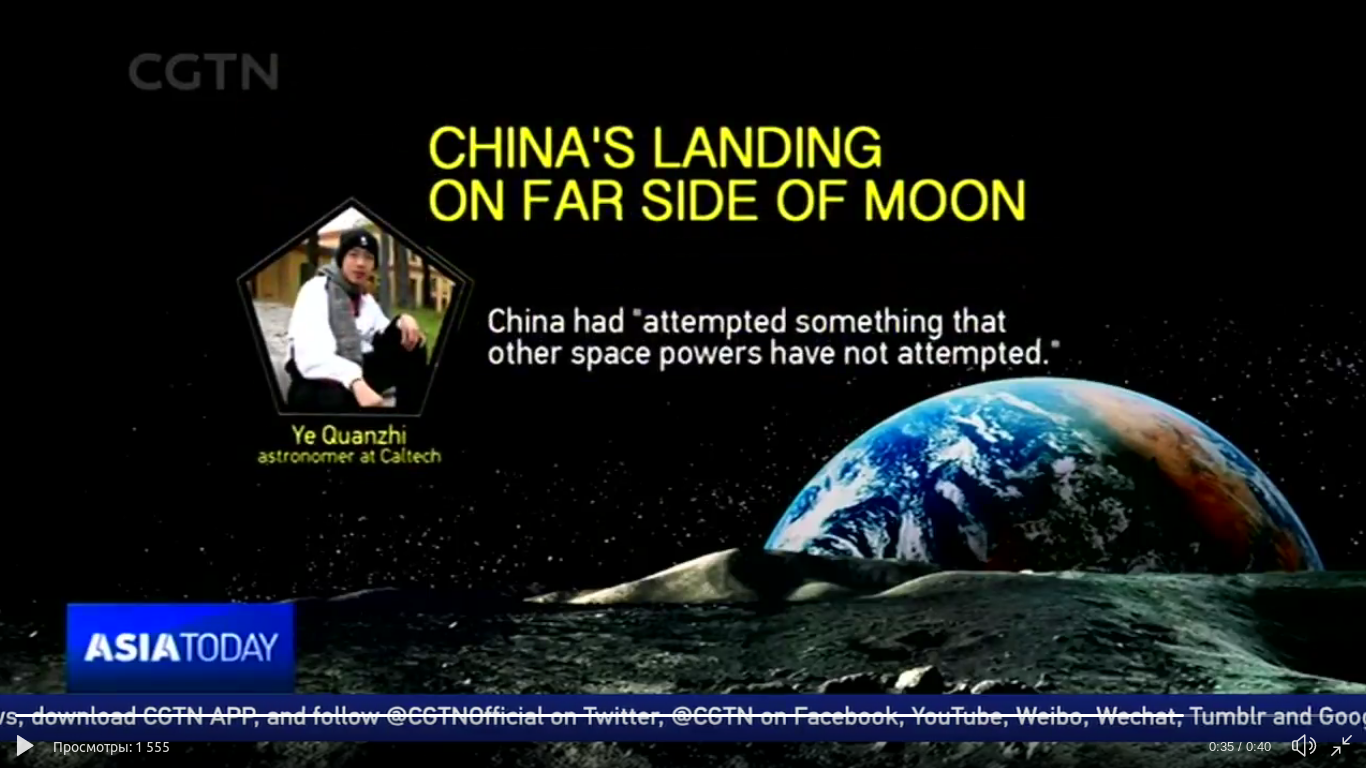
Chang'e-4 station, launched three weeks ago to the Moon, entered an estimated orbit on December 30.

"The probe went into an elliptical lunar orbit with relocation (minimum distance from the moon's surface) 15 kilometers and an apo-settlement (maximum distance) 100 kilometers at 8.55 Beijing time (3.55 Moscow time)," the Xinhua message then said.

For the first time, the device reached the lunar orbit as early as December 12, since then, specialists of the Chinese Mission Control Center have twice corrected the station's orbit and tested the connection between the device and the QuTqiao satellite relay.

During this time, the work of transmitting cameras and laser altimeters, which will be involved during the landing, was also checked.
China launched the Chang'e-4 space station, which will explore the other side of the moon for the first time in the history of mankind, on December 7, 2018 at 21:20 Moscow time. "Chang'e-4" is part of the lunar program of China, a sequel and understudy of "Chang'e-3".
Launch and soft landing on the moon was originally planned in 2015, but were postponed to 2018. Since there is no direct visibility, the Quiqiao relay satellite, which was launched from the Xichang Cosmodrome on May 20, 2018, will be used to communicate with the devices.
“Chang'e-4” became a doubler of “Chang'e-3 ″, it faces the same tasks - soft landing on the moon and studying its surface.
The Chang'e-3 station, which was launched on December 2, 2013, delivered the Yuuta lunar rover to the lunar surface. It was equipped with ground penetrating radar and two spectrometers to study the lunar soil. But the mission could not be fully realized - after 40 days the Lunokhod lost mobility, although it continued to work while standing still. On August 3, 2016, it was announced that Yuytu had completed its work.
The main difference of the mission is that the station was the first time in the history of the village on the far side of the Moon, where for 60 years of space exploration no station had landed.
An important task within the mission will be biological experiments.
Together with the station, the seeds of potato, Tal's rezuhovidka (plants of the cabbage family) and silkworm eggs set off on the reverse side of the moon in an airtight container.
The researchers plan to check whether it is possible to create in the spacecraft a closed ecosystem in which the larvae will produce carbon dioxide, and the plants will convert it into oxygen through photosynthesis.

In the Associated Press, with reference to the Chinese television, they clarified that the device had sunk at 10.26 Beijing time (this morning Thursday at 5.26 Moscow time).
The Chinese authorities especially emphasize that this cosmic event is "an important milestone in the exploration of space."
New photos "Lunar rover Yutu-2" added to the article.
In continuation of this post .
“The Chinese station Chang'e-4 landed on the far side of the moon on Thursday, January 3, 2019, becoming the first vehicle to sit softly on the unexplored side, which is never visible from Earth,” said the long-awaited event by the Chinese state-owned media outlets

Zond. which includes the landing gear and the lunar rover, landed in a pre-selected area.


The probe sat in the crater. Pocket is a huge ancient impact crater in the southern hemisphere of the far side of the moon.

The selected landing site is located in the southern part of the Pocket crater with a diameter of 186 km, which offers relatively flat areas with a small number of slopes or visible obstacles to a safe landing.

The coordinates of the landing site of the device are 177.6 degrees east longitude, 45.5 degrees south latitude, which is close enough to the previously established place.
Details of the landing:
- first, at a height of 6-8 kilometers, the device estimated its location.
- at a height of about 100 meters, he stopped the decline to analyze information on the subject of possible obstacles on the way, and only then landed.

Messages about the landing of the device began with confusion, as initially the Chinese media reported on the successful touch of the lunar surface, but then these messages were removed from the tweeter.
This led to suggestions that the device crashed during landing or an abnormal situation occurred. But later the information was updated and released official statements about the successful landing.
This landing on the moon took place almost under cover of secrecy, since there was neither a live broadcast from the MCC, nor anticipating press conferences.
Already at 11.40, Beijing time (6.40 Moscow time), the device made the first ever photograph of the surface of the back side of the Moon from the landing site and transmitted it to Earth.

Why is this color? The answer is here .
New photos of Lunar rover Yutu-2 from here .
After seven hours of preparation, the Yutu-2 lunar rover was able to exit the boarding module and begin its first research.
The Jade Rabbit-2 will study the lunar surface until the end of a sunny day on that side of the moon, which lasts until January 12, after Yutu-2 expects 14 days of a lunar night.


For the first time, the Soviet AMC Luna-3 was captured on the reverse side of the moon on October 7, 1959. After that, the moon was flown by other vehicles, including the Apollo-8 spacecraft with American astronauts aboard.
However, the distant part of the Earth from the surface of its satellite has not yet been photographed close to today.
The main problem is that the reverse side is never visible from Earth, due to the phenomenon of tidal capture. This means that there must be a satellite outside the moon for transmitting messages between ground tracking stations and the spacecraft.
The Tseutqiao repeater satellite (triage bridge), launched in May, operates in halo-orbit around a special gravitationally stable Lagrange point Earth-Moon L2, from which it can maintain direct visibility to the Earth and the lunar back side at any time.

World reaction to this historical event:





Chang'e-4 station, launched three weeks ago to the Moon, entered an estimated orbit on December 30.

"The probe went into an elliptical lunar orbit with relocation (minimum distance from the moon's surface) 15 kilometers and an apo-settlement (maximum distance) 100 kilometers at 8.55 Beijing time (3.55 Moscow time)," the Xinhua message then said.

For the first time, the device reached the lunar orbit as early as December 12, since then, specialists of the Chinese Mission Control Center have twice corrected the station's orbit and tested the connection between the device and the QuTqiao satellite relay.

During this time, the work of transmitting cameras and laser altimeters, which will be involved during the landing, was also checked.
China launched the Chang'e-4 space station, which will explore the other side of the moon for the first time in the history of mankind, on December 7, 2018 at 21:20 Moscow time. "Chang'e-4" is part of the lunar program of China, a sequel and understudy of "Chang'e-3".
Launch and soft landing on the moon was originally planned in 2015, but were postponed to 2018. Since there is no direct visibility, the Quiqiao relay satellite, which was launched from the Xichang Cosmodrome on May 20, 2018, will be used to communicate with the devices.
“Chang'e-4” became a doubler of “Chang'e-3 ″, it faces the same tasks - soft landing on the moon and studying its surface.
The Chang'e-3 station, which was launched on December 2, 2013, delivered the Yuuta lunar rover to the lunar surface. It was equipped with ground penetrating radar and two spectrometers to study the lunar soil. But the mission could not be fully realized - after 40 days the Lunokhod lost mobility, although it continued to work while standing still. On August 3, 2016, it was announced that Yuytu had completed its work.
The main difference of the mission is that the station was the first time in the history of the village on the far side of the Moon, where for 60 years of space exploration no station had landed.
An important task within the mission will be biological experiments.
Together with the station, the seeds of potato, Tal's rezuhovidka (plants of the cabbage family) and silkworm eggs set off on the reverse side of the moon in an airtight container.
The researchers plan to check whether it is possible to create in the spacecraft a closed ecosystem in which the larvae will produce carbon dioxide, and the plants will convert it into oxygen through photosynthesis.
